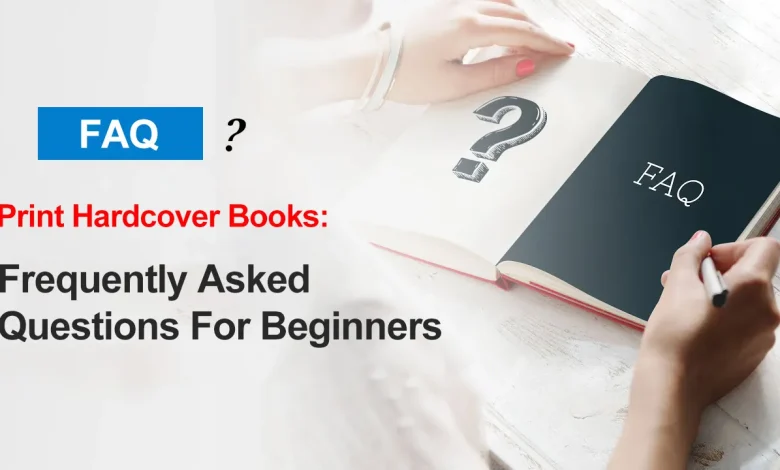Print Hardcover Book: Crafting Timeless Literary Artifacts

Print hardcover book services have become a cornerstone of self-publishing, offering authors the ability to produce durable, premium-quality books that stand out on shelves, as provided by platforms like IngramSpark, Lulu, and Palmetto Publishing, per ingramspark.com. These services combine print-on-demand technology with high-quality materials, creating books that exude professionalism and longevity. While hardcover printing elevates a book’s perceived value, authors must navigate costs, quality, and distribution to maximize its impact in a competitive market.
The Appeal of Hardcover Books
Hardcover books hold a unique allure, evoking a sense of permanence and prestige that resonates with readers and collectors, as noted by palmettopublishing.com. Unlike paperbacks, hardcovers feature sturdy bindings and premium materials, such as leather or cloth covers, making them ideal for genres like literary fiction, textbooks, and children’s books. By 2025, the demand for hardcovers in self-publishing has surged, driven by readers seeking tactile, high-quality experiences, according to shopify.com.
This focus on quality aligns with the user’s interest in visually appealing product presentations. Hardcovers enhance a book’s aesthetic, with options like foil stamping or dust jackets adding sophistication, as per lulu.com. For self-published authors, offering a hardcover edition alongside eBooks and paperbacks caters to diverse reader preferences, increasing marketability and perceived value.
The Hardcover Printing Process
Printing a hardcover book begins with a polished manuscript, formatted to meet platform specifications, such as IngramSpark’s trim sizes ranging from 5”x8” to 8.5”x11”, as detailed on ingramspark.com. Authors upload files, typically PDFs, with separate submissions for interiors and covers, ensuring high-resolution designs for professional output. Platforms like Lulu offer over 3,000 customization options, including binding types and paper quality, as per lulu.com.
Cover design is pivotal, with hardcover-specific requirements like spine width and dust jacket flaps, resonating with the user’s preference for compelling showcases. Print-on-demand ensures books are printed only when ordered, reducing inventory costs, as noted by kk.org. Quality control involves pre-flight checks to catch errors, and platforms like Palmetto Publishing offer proof copies to verify aesthetics. Distribution connects books to retailers like Amazon and Barnes & Noble, with IngramSpark’s network reaching 39,000 outlets, as per editage.com.
Benefits of Hardcover Printing
Hardcover printing offers distinct advantages. Durability ensures books withstand frequent handling, ideal for reference works or collectibles, as highlighted by palmettopublishing.com. Aesthetic appeal, with premium finishes like embossing, enhances branding, aligning with the user’s interest in professional presentations. Higher retail prices, often $20-$30, yield better profit margins, with royalties up to 60% after printing costs, as per kdp.amazon.com.
Global distribution through platforms like IngramSpark broadens reach, while print-on-demand eliminates inventory risks, as praised by shopify.com. Customization options, such as Lulu’s premium paper choices, allow authors to tailor books to their vision. These benefits make hardcovers a strategic choice for authors seeking to elevate their work’s perceived value and market presence.
Challenges and Solutions
Hardcover printing is costlier than paperbacks, with printing costs of $6-$10 per book, reducing royalties, as noted by papertrue.com. Authors can offset this by setting higher retail prices or using platforms like KDP for lower setup costs. Quality variability, particularly in binding, is mitigated by ordering proof copies, as advised by ingramspark.com. Limited customization on some platforms, like KDP, is addressed by choosing providers like Lulu for premium options.
Distribution exclusivity, such as KDP Select, limits reach, but IngramSpark’s non-exclusive model offers flexibility. Technical expertise for formatting is a hurdle, mitigated by services like BookBaby’s hardcover packages. These solutions ensure authors achieve professional-quality hardcovers without compromising profitability.
Future Trends in Hardcover Printing
AI will optimize hardcover printing, automating design checks and predicting demand, reducing costs. Sustainable materials, like recycled paper, will gain traction, aligning with eco-conscious trends. Interactive hardcovers with QR codes linking to digital content will enhance engagement, resonating with the user’s interest in immersive experiences. Expanded global distribution will target emerging markets, making hardcovers more accessible. These trends will elevate hardcover printing’s role in self-publishing.
Real-World Impact
An author using Palmetto Publishing printed a hardcover memoir, selling 2,000 copies at a premium price, boosting profits, as shared on palmettopublishing.com. Another leveraged IngramSpark’s network to place a hardcover novel in libraries, enhancing credibility. These examples highlight hardcover printing’s ability to create lasting, marketable books that resonate with readers.
Conclusion: Crafting Literary Legacies
Print hardcover book services empower authors to create durable, premium books that stand out in a digital age. While costs and technical demands require careful navigation, the aesthetic and financial rewards make hardcovers a valuable investment. As technology advances, these services will continue to redefine self-publishing, enabling authors to craft timeless literary artifacts.


